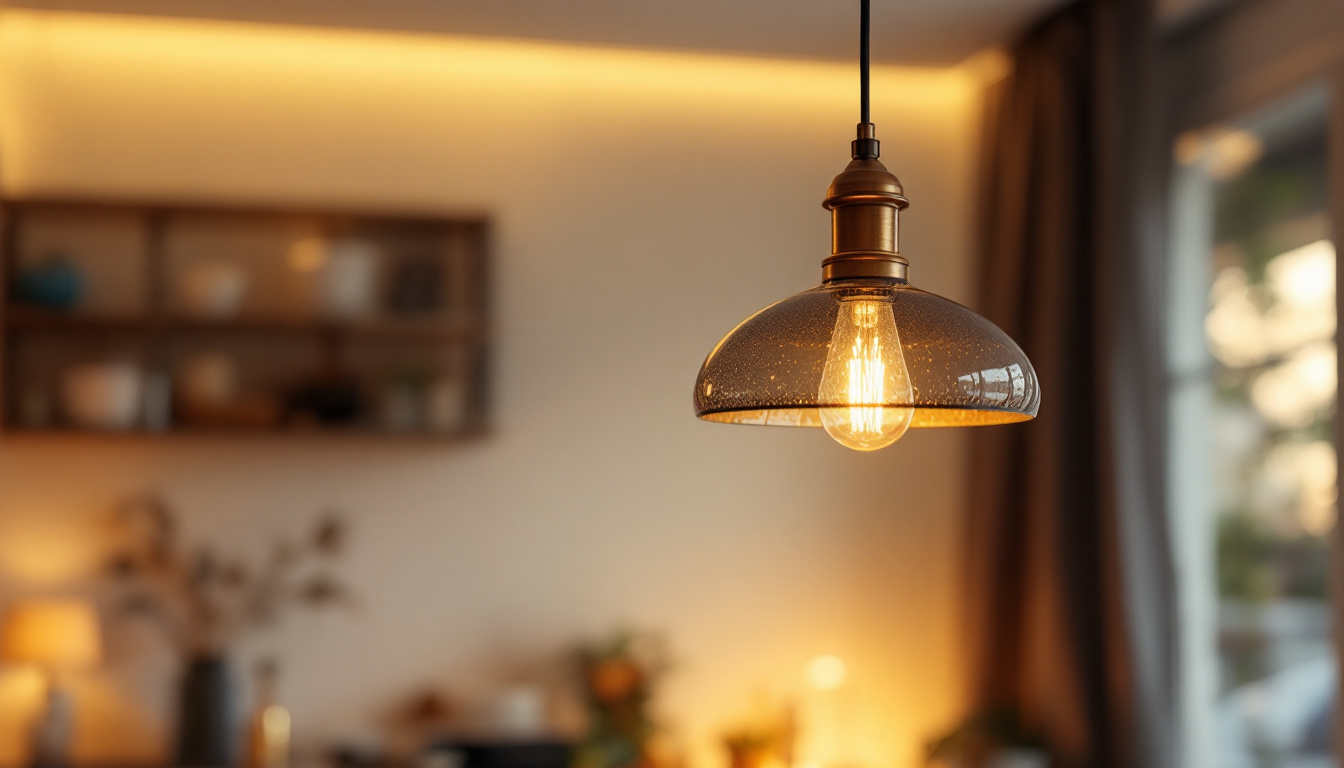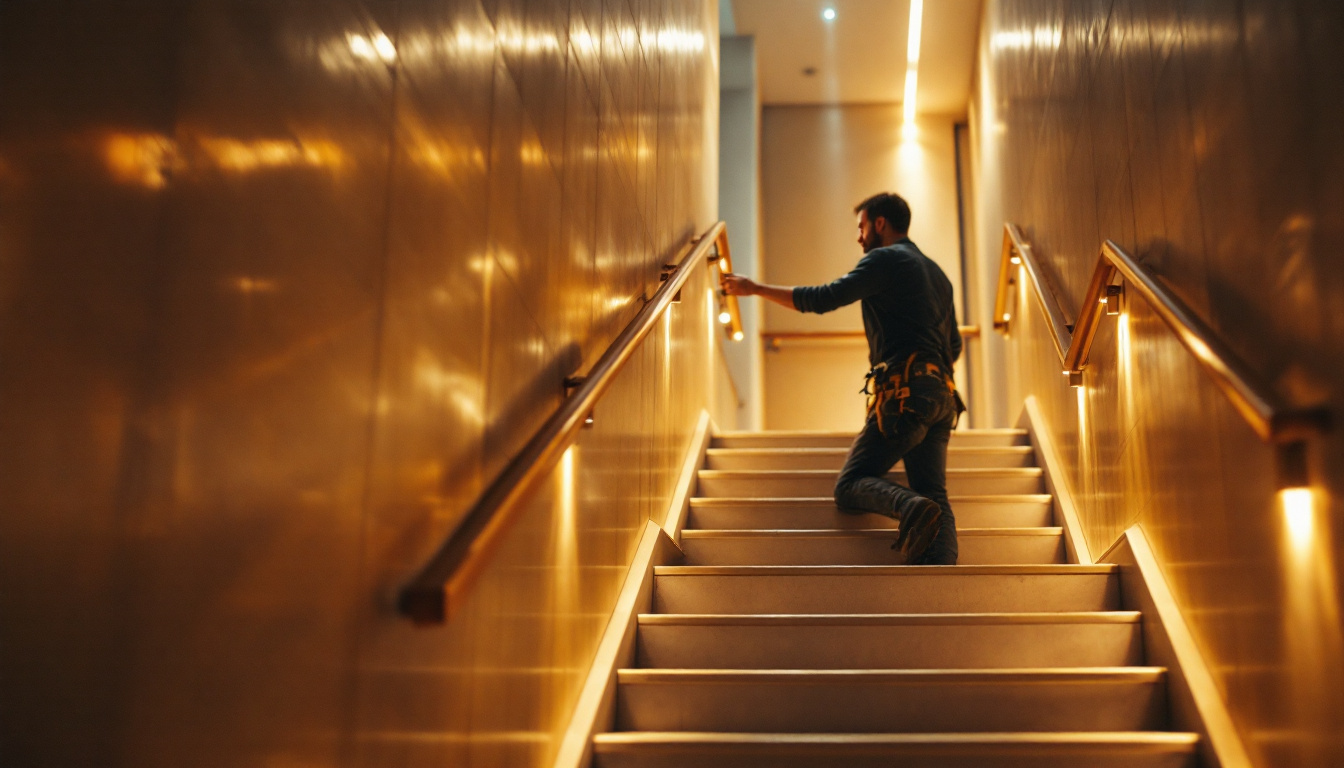

In the world of lighting contracting, the right tools and techniques can make all the difference in delivering quality work. One essential tool that often gets overlooked is the hanging work light. This versatile lighting solution can enhance visibility, improve safety, and boost productivity on the job site. Here are some quick tips to help lighting contractors maximize the use of hanging work lights.
Hanging work lights provide several advantages over traditional portable lighting solutions. Understanding these benefits can help contractors make informed decisions about their lighting setups.
One of the primary benefits of hanging work lights is the enhanced visibility they offer. By suspending lights from ceilings or beams, contractors can illuminate large areas without the clutter of floor-based lighting. This is particularly useful in spaces with high ceilings or during renovations where floor space is limited.
Good visibility not only aids in the quality of work but also helps in identifying potential hazards. Properly lit work areas reduce the risk of accidents and injuries, making it safer for everyone on the job site. Furthermore, the ability to adjust the height and angle of hanging lights allows for targeted illumination of specific work zones, ensuring that every detail is visible and that workers can perform their tasks with precision.
Safety is a top priority in any contracting job. Hanging work lights contribute to a safer environment by minimizing shadows and dark spots that can lead to trips and falls. When workers can clearly see their surroundings, they can navigate the job site more effectively.
Additionally, using hanging lights can help avoid the hazards associated with using extension cords and portable lights. By eliminating the need for cords on the ground, contractors can reduce tripping hazards and keep the work area organized. Moreover, many modern hanging work lights come equipped with features such as motion sensors and dimming capabilities, which can further enhance safety by ensuring that lights are only active when needed, thus conserving energy and reducing the risk of overheating.
Another safety benefit of hanging work lights is their durability. Unlike portable lights that may be easily knocked over or damaged, hanging lights are typically designed to withstand the rigors of construction environments. This resilience means that they can provide consistent lighting over extended periods, which is crucial for long-term projects where reliability is key. Additionally, many hanging work lights are constructed with weather-resistant materials, making them suitable for both indoor and outdoor applications, further expanding their utility across various job sites.
With a variety of hanging work lights available on the market, selecting the right one can be challenging. Here are some factors to consider when making a choice.
When selecting a hanging work light, it’s essential to consider the light output measured in lumens. Higher lumens mean brighter light, which is crucial for detailed tasks. For general work areas, a light output of around 3,000 to 5,000 lumens is often sufficient, but specialized tasks may require more intense lighting.
Color temperature is another important factor. Lights with a cooler color temperature (around 5000K to 6500K) tend to mimic daylight, which can help reduce eye strain and improve focus. Warmer color temperatures (around 2700K to 3000K) create a softer light, which might be more suitable for certain environments. Additionally, some advanced models offer adjustable color temperatures, allowing users to customize the lighting according to the specific needs of their workspace. This versatility can be particularly beneficial in settings where tasks vary throughout the day.
Contractors should look for hanging work lights that are built to withstand the rigors of job sites. Durable materials, such as impact-resistant plastics or metal housings, can help ensure longevity. Additionally, features like water resistance and dustproof ratings can enhance a light’s usability in various conditions. A robust design not only protects the light from physical damage but also ensures it remains functional in challenging environments, such as outdoor sites or industrial areas where debris and moisture are common.
Portability is also a key consideration. Some hanging work lights come with features like retractable cords or built-in hooks for easy setup and takedown. This can save valuable time on the job site and make it easier to reposition lights as necessary. Furthermore, lightweight designs and compact storage options can facilitate transport between locations, making it easier for professionals to carry their equipment without added strain. Some models even include battery options for true portability, eliminating the need for nearby power sources and allowing for greater flexibility in lighting setups.
Once the right hanging work lights have been selected, implementing best practices can help maximize their effectiveness. Here are some tips for optimal use.
Placement of hanging work lights is critical for achieving maximum illumination. Ideally, lights should be positioned at a height that allows them to cast light evenly across the work area. This often means hanging them from ceilings or overhead beams at least 6 to 8 feet off the ground.
Contractors should also consider the layout of the workspace. Placing lights strategically in corners or areas where shadows are likely to form can help eliminate dark spots. Experimenting with different placements can lead to the best lighting configuration for specific tasks. For instance, in a garage or workshop, positioning lights directly above workbenches can significantly enhance visibility, allowing for more precise work and reducing the risk of accidents.
To ensure hanging work lights remain effective, regular maintenance is essential. This includes checking for any signs of wear and tear, such as frayed cords or cracked casings. Keeping lights clean and free of dust can also enhance their performance and longevity.
Additionally, contractors should routinely test the lights to ensure they are functioning correctly. A burnt-out bulb can lead to unsafe working conditions, so replacing bulbs promptly is crucial. It’s also wise to keep a stock of replacement bulbs on hand, particularly in high-use environments, to minimize downtime. Furthermore, consider the use of LED lights, which not only consume less energy but also have a longer lifespan compared to traditional incandescent bulbs, making them a cost-effective choice for long-term use.
Safety should always be a top priority when using hanging work lights. Ensuring that all electrical connections are secure and that lights are installed in compliance with local codes can prevent electrical hazards. Additionally, using lights that are rated for the specific environment—such as damp or hazardous locations—can further enhance safety. It’s also advisable to use lights with protective cages or covers to prevent damage from falling objects or accidental bumps, especially in busy work areas.
Moreover, employing motion sensors or timers can help manage energy consumption and reduce the risk of leaving lights on unnecessarily. This not only conserves energy but also prolongs the life of the lighting fixtures. By integrating these safety measures into the use of hanging work lights, contractors can create a safer and more efficient workspace for everyone involved.
Incorporating innovative techniques can further enhance the effectiveness of hanging work lights. Here are a few strategies that contractors might find beneficial.
One effective way to increase light distribution is by utilizing reflective surfaces. By positioning mirrors or reflective panels around the work area, contractors can bounce light off these surfaces, creating a brighter environment without needing additional lighting.
This technique is particularly useful in spaces with high ceilings or where light needs to be directed toward specific areas. It can also help reduce energy consumption by maximizing the output of existing lights.
Layering different types of lighting can create a more versatile and effective lighting setup. In addition to hanging work lights, contractors can incorporate task lighting, such as portable LED lights, to focus on specific areas where detailed work is being performed.
Combining ambient lighting with task lighting can help create a balanced environment that meets various needs. This approach ensures that all areas of the job site are adequately illuminated, enhancing both safety and productivity.
Even experienced contractors can fall into common pitfalls when using hanging work lights. Awareness of these mistakes can lead to better practices and improved outcomes.
One frequent oversight is failing to consider power sources when setting up hanging work lights. Contractors should ensure that there are adequate outlets available and that the lights are compatible with the available power supply.
Using extension cords can be a temporary solution, but it’s essential to use heavy-duty cords rated for the wattage of the lights being used. Overloading outlets can lead to tripped breakers or, worse, electrical fires.
Another mistake is neglecting the importance of light distribution. Simply hanging a light in one location may not provide adequate coverage for the entire work area. Contractors should assess the space and adjust the number and placement of lights as needed to ensure even illumination.
It’s also important to avoid placing lights too close to surfaces that can absorb or block light, as this can create unnecessary shadows and dark spots.
Hanging work lights are an invaluable tool for lighting contractors, offering enhanced visibility, improved safety, and increased productivity. By understanding the benefits, choosing the right lights, implementing best practices, and avoiding common mistakes, contractors can create a well-lit work environment that supports their efforts and ensures quality results.
Whether working in residential, commercial, or industrial settings, the effective use of hanging work lights can transform the job site, making it safer and more efficient. By keeping these quick tips in mind, lighting contractors can elevate their work and deliver exceptional service to their clients.
Ready to enhance your work sites with the best hanging work lights in the industry? Look no further than LumenWholesale, where we provide contractors with superior, spec-grade lighting solutions at unbeatable wholesale prices. Say goodbye to local distributor markups and hello to our extensive selection that meets the highest industry standards for reliability and performance. Plus, with free shipping on bulk orders, you can stock up on premium lighting without worrying about hidden fees or compromises. Elevate your lighting game and experience the ideal combination of quality, affordability, and convenience. Wholesale Lighting at the Best Value is just a click away.

Discover the essential checklist for lighting contractors seeking the best LED lights for sale.

Discover essential insights for lighting contractors on selecting and installing hanging lamps.

Discover innovative hacks for smart lighting contractors to enhance their projects with exterior LED light fixtures.

Discover how LED spotlights for stairs can revolutionize lighting projects for contractors by enhancing efficiency, reducing energy costs, and providing superior illumination.
Get notified when NEW deals are released.
Optimize your budget with wholesale discounts.
Only top-quality, specification-grade lighting products.
No additional costs at checkout - what you see is what you pay.
We understand the unique needs of contractors.